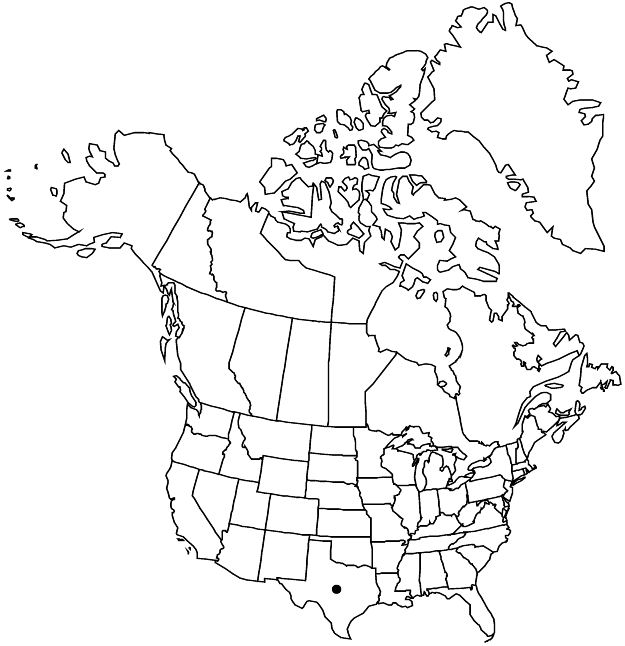Hibiscus dasycalyx
J. Wash. Acad. Sci. 48: 277, fig. 1. 1958.
Herbs, perennial, to 2.5 m. Stems glabrous. Leaves: stipules linear-subulate, 1.5–5 mm; petiole 1/2–3/4 blade, glabrous; blade narrowly to broadly triangular-ovate, deeply hastately 3-lobed, 5–12 × 1–14 cm, base cordate to truncate, lobes linear-lanceolate, 3+ times as long as wide, margins coarsely and remotely serrate, apices long-acuminate, surfaces glabrous, nectary absent. Inflorescences solitary flowers in axils of distal leaves. Pedicels jointed medially to distally, 1–3 cm, 1/3–2/3 times subtending petioles, minutely hairy distal to joint; involucellar bractlets 8–10, linear-subulate, 1.8–2.2 cm, margins inconspicuously ciliate, simple-hairy. Flowers ± horizontal; calyx divided 1/3 length, broadly cylindric-campanulate, 1.5–3 cm, larger in fruit, lobes very broadly triangular and subtrullate, apices apiculate, hairy, hairs simple, 1+ mm, underlain by shorter stellate ones, veins sometimes zigzag, nectaries absent; corolla broadly funnelform, petals creamy white, deep red basally, obovate, 4.5–7 × 3–5.5 cm, apical margins repand, sometimes undulate, sometimes minutely hairy abaxially where exposed in bud; staminal column straight, pale pink to white, 2.5–3 cm, length 1/2 petals, bearing filaments nearly throughout, free portions of filaments not secund, 1–2 mm; pollen pale pink to purple; styles cream, 4–10 mm; stigmas cream. Capsules brown, ovoid, 1.6–2.8 cm, apex rounded-truncate, apiculate, hairy. Seeds reddish brown to brown, reniform-globose, 3.5 mm, hairy, hairs reddish brown. 2n = 38.
Phenology: Flowering mid Jun–mid Aug.
Habitat: Open marshy habitats, seasonally wet alluvial soil, edges of ponds
Elevation: 50–100 m
Discussion
Of conservation concern.
R. A. Klips (1995) suggested that Hibiscus dasycalyx might better be treated as a subspecies or variety of H. laevis; R. L. Small (2004) found molecular evidence that it should be maintained as a species. It is known only from Cherokee, Harrison, Houston, and Trinity counties in eastern Texas.
Hibiscus dasycalyx is in the Center for Plant Conservation’s National Collection of Endangered Plants.
Selected References
None.
